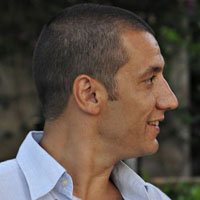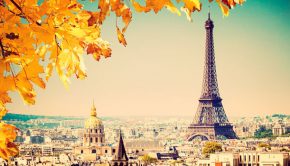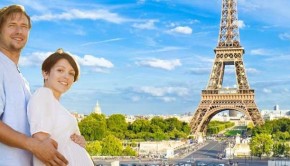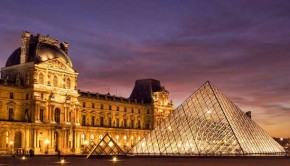Weekend in Paris from A to Z
Departure on Friday night, return on Sunday evening. Today more than ever you can decide to make a “flying visit” in Paris with a cheap flight and a budget hotel, just to breathe a different atmosphere for a weekend. But what to do in two days? Let’s have fun with a city glossary from A to Z.
A – Arrondissement
Map in hand to get an idea of how Paris is divided administratively, including about twenty “’arrondissement”, kind of districts, each of which is divided into four neighborhoods.
B – Bastille
Place de la Bastille is one of the most important places in Paris for major events. It is at the intersection among Rue Saint Antoine, Rue Henri IV, Rue de Lyon and Rue de Faubourg.
C – Conciergerie
La Conciergerie is a beautiful building in the north-west area of Île de la Cité, which is used as the headquarters of several courts. It was once an old prison: here, during the French Revolution, hundreds of people were guillotined.
D – Defense
At the far north west of Paris there is the particular neighborhood, La Défense, a very modern neighborhood built from years 80, with skyscrapers and buildings in glass and steel. From the Grande Arche, in the main square, you can have a view to the Arc de Triomphe at the intersection of the major boulevards.
E – Eiffel
The symbol of Paris, at the Pont d’Iena, was built in occasion of the “Paris 1889 World Exposition”. The Eiffel Tower is 240 meters high and weighs over 10 000 tons. If you look from below the balcony of the ground floor, you can see on all sides the names, being incised by the builder Gustave Eiffel, of 72 famous French citizens. There is not a woman…
F – Figaro
Le Figaro is one of the oldest newspapers still published in France. Born as a satirical magazine in the first half of the 800, it has become one of the best read. Basically conservative, in 2004 moved its headquarters from the Rue du Louvre in the Boulevard Haussmann.
G – Germain-des-Prés
One of the most elegant and classic neighborhood of Paris, rich of history and landmarks, but also restaurants, bars, cafes and art galleries and many small craft and antique stores. Saint Germain des Prés is frequented by university students, teachers and intellectuals.
H – Hotel
Just to remember that in Paris there is spoil for choice where to stay. In the centre there are different solutions, from the cheapest to the most luxurious; from family-run to those of the international chains; from B&B to hotels for business travelers with all the comforts and services of the highest level. Booking in advance is always better.
I – Invalides
Large complex of buildings built in the 17th century as a place of refuge for war invalids. Here, in the church of Saint-Louis, inside the complex, there is the tomb of Napoleon. Today it is an important Army Museum, with artifacts and objects of French military history from the seventeenth to the Second World War.
L – Louvre
In a weekend thinking of visiting also the Louvre is an impossible task: there are over 30 thousand works exhibited. The museum is divided into pavilions and rooms, so if you want, you can choose what to see. Alternatively the library of the museum you can always decide to buy a “Guide du Musée du Louvre” and settle for a… virtual tour.
M – Marais
Neighborhood of the right bank of the Seine, very interesting both from a historical and a social point of view. The square of seventeenth-century, situated in Place des Vosges, is the centre of the neighborhood that houses, among other things, the Picasso Museum and the Museum of the History of France. Marais is famous, because it is the centre of the homosexual community and live here one of the main Jewish communities of the city.
N – Nationalistic
The spirit of French nationalism is famous throughout Europe. The French always feel a bit different from other Europeans, and especially the Parisians that feel right in the centre of the world. Paris concentrates in itself all the pros and cons of this feeling that goes back to past centuries, when France had colonies, revolution and philosophy.
O – Opera
In the Rue Scribe, near the Palais Garnier, there is the head of the Paris Opera, the great theatre of opera and contemporary works of the city. In fact, at the Palais Garnier, there is the home of Ballet de l’Opera: the other head of the theatre is the Opéra Bastille in the Place de la Bastille.
P – Pantheon
In the Latin quarter, near the Sorbonne and the Luxembourg Gardens, the Pantheon is one of the most famous monuments of the city. Here, are collected the graves of famous people in the history of France: Voltaire, Marat, Rousseau, Victor Hugo, Jean Moulin, Marie Curie, etc..
Q – Quarter (The Latin)
It is not a real administrative area, being divided among different arrondissements. But it is one of the most popular areas of Paris, rich in history and social and cultural life. From here, the students began to challenge in 1968: the Sorbonne is within the neighborhood, such as a lot of high schools, churches and major monuments. In the Latin Quarter evening and night fun is guaranteed.
R – Rue de Rivoli
One of the most famous streets of Paris, with its shops, trendy shopping malls, the arcades along the buildings, near the Tuileries Gardens and the Louvre palace. A walk in this street is a must, to admire the shop-windows of the brand and the most famous names in fashion.
S – Sainte Chapelle
Near the cathedral of Notre Dame, which is a must for anyone visiting Paris, there is a delightful church restored in mid-1800 which is a jewel of French Gothic. To get there you have to drive through a passage in the courtyard of the Palace of Justice.
T – Triomphe de l’Etoile
At the beginning of the Champs-Elysees, at the centre of the Place de l’Etoile, there is the Arc de Triomphe, commissioned in early 1800 by Napoleon Bonaparte after his victory in the battle of Austerlitz. Every evening, around 18.30, the members of associations of victims of war revive the flame at the tomb of the Unknown Soldier.
U – University
The Sorbonne, the university par eccelence, is a beautiful building of Paris, lying on the left side of the Senna River, in the Latin Quarter, among rue des Ecoles, rue Saint Jacques and Place de la Sorbonne.
V – Villette
It is the largest city park, more than 25 hectares, in the northeast area of the city. Inside the park there are many capable facilities, monuments, and in particular the Science City (Cité des Sciences et de l’Industrie), large public facility dedicated to the dissemination of scientific and technological knowledge especially among young people.
Z – Zoo
One of the best and most beautiful zoos of Paris is within the Jardin des Plantes, in the fifth arrondissement. It is a relaxing green area in which especially small animals are presented to the public. The zoo dates back to 1700, and it is near the Great Mosque of Paris and the Pantheon.












0 Responses to Weekend in Paris from A to Z